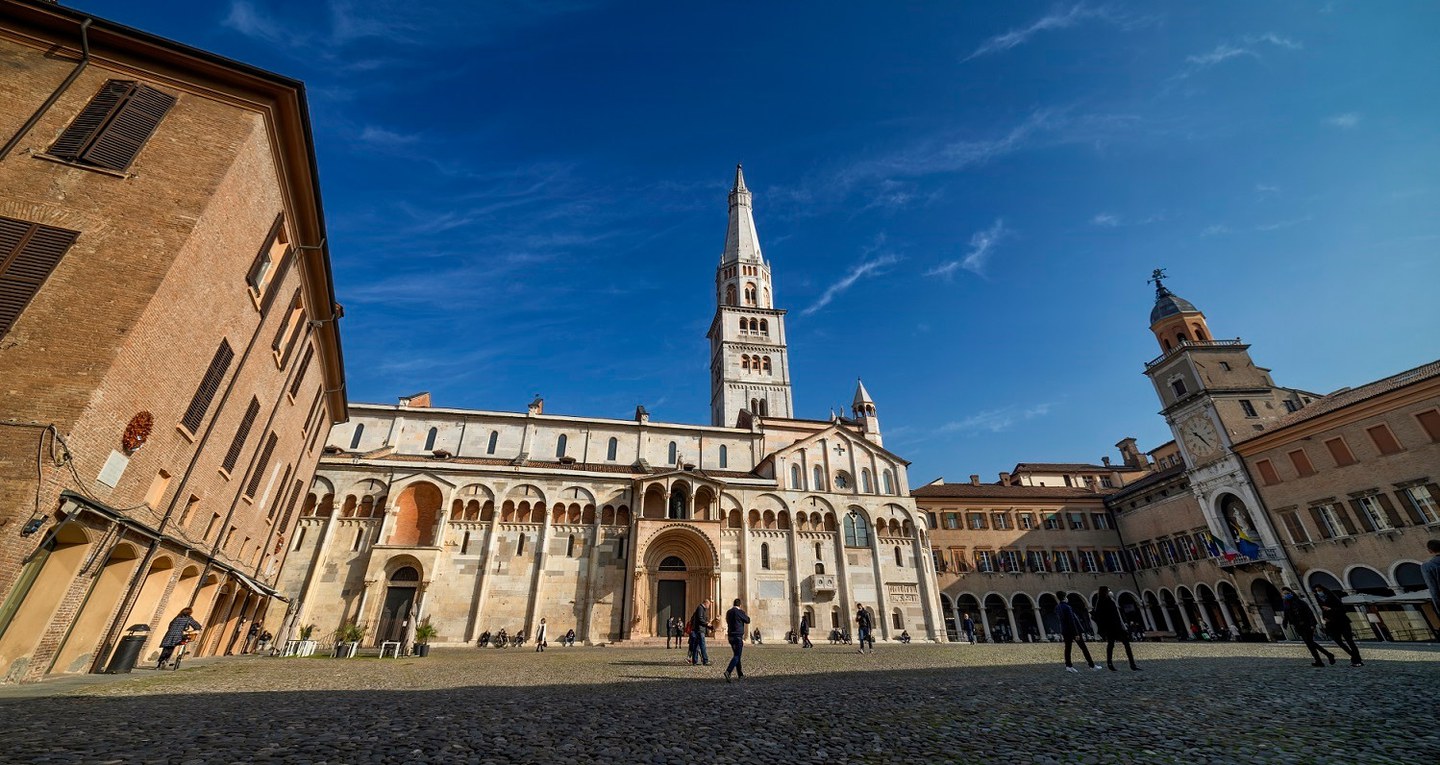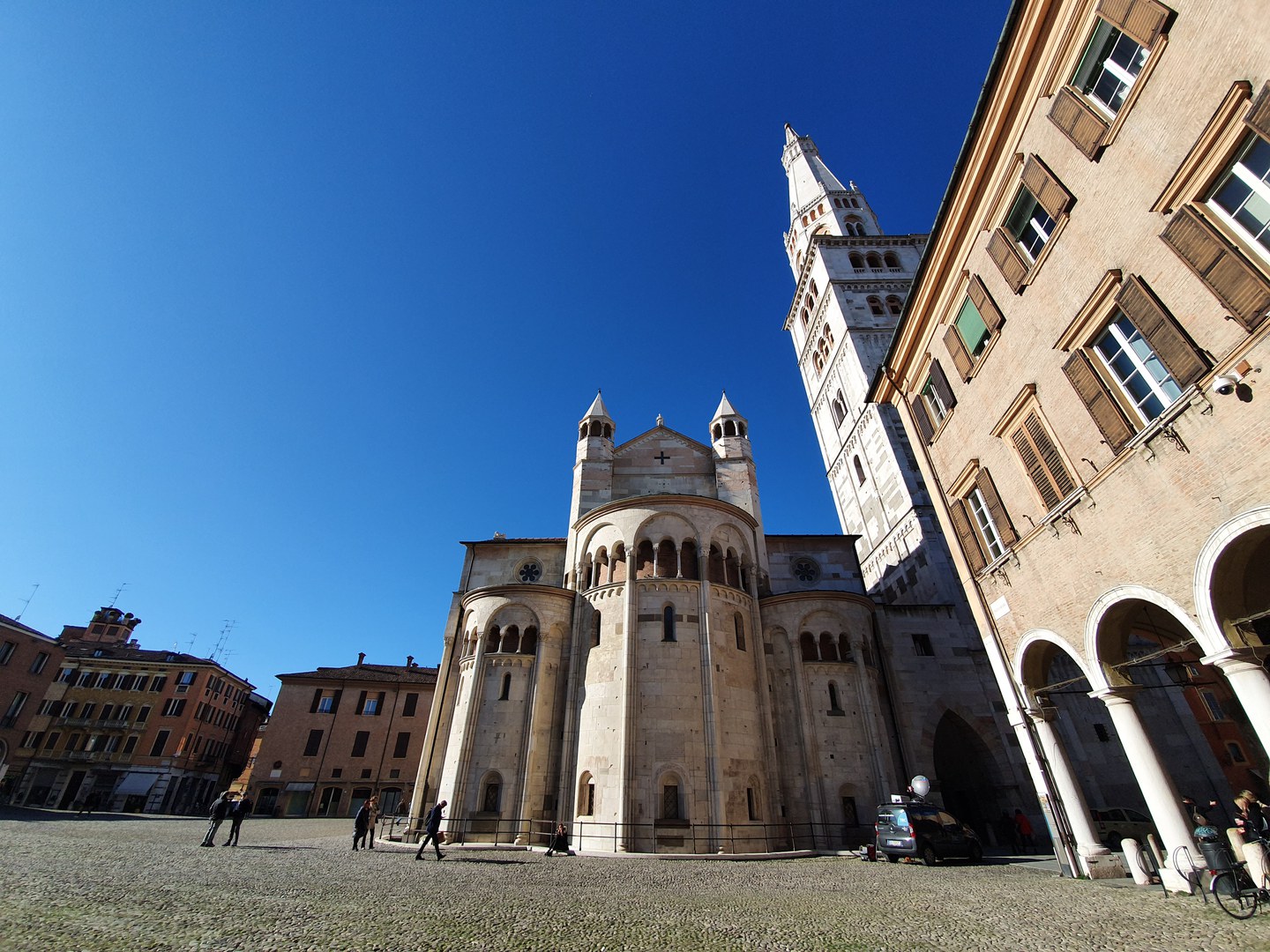
Modena Unesco site
A World Heritage site
The joint creation of Lanfranco and Wiligelmo is a masterpiece of human creative genius in which a new dialectical relation between architecture and sculpture was created in Romanesque art. The Modena complex bears exceptional witness to the cultural traditions of the 12th century in northern Italy’s urban society and it's is one of the best examples of an architectural complex where religious and civic values are combined in a medieval Christian town
Modena’s World Heritage Site includes the Ghirlandina Tower, Piazza Grande, and Modena’s Cathedral, a masterpiece of human creative genius and one of the best examples of Romanesque style in the world.
Book online
Access to some locations within the UNESCO Site of Modena is available by reservation only.
Plan your visit
To contemplate these splendid buildings is a jaw-dropping experience, and understanding the story and the particulars of their design will help make clear why this site is so precious—not only for the city of Modena but for all of Europe.
- The Cathedral, built to honor St. Geminianus (San Geminiano), Modena’s Patron Saint, has been called a “Bible in Stone” for its astounding depictions-in-relief of stories of life on Earth. The Cathedral was designed by the architect Lanfranco, a major artist and builder, while the superb sculptures on the façade are the work of the sculptor Wiligelmo. The first stone in the building was laid on 9 June 1099, and the so-called “Campionese-masters” began their work on the Cathedral toward the end of the 1100s, creating the ample Porta Regia, which opens onto Piazza Grande, the beautiful rose window on the façade, and, inside the Cathedral, the marble parapet that separates the sanctuary from the nave.
- Alongside the apse of the Cathedral, the Ghirlandina Tower rises more than eighty-nine meters (more than 293 feet) into the sky. The symbol of Modena, the Ghirlandina Tower was nicknamed by the city's residents for the marble balustrades that crown the spire, “as graceful as garlands” (ghirlanda, in Italian).
- Complete your tour of the UNESCO site with a visit to the Museums of the Cathedral whose collections contain priceless treasures of art and religious faith.
- Splendidly framed by the Duomo, the Ghirlandina Tower, and the airy portico of the Palazzo Comunale, Piazza Grande has always been an active space at the heart of life in Modena. Today, as in the past, the Piazza hosts events of all kinds, including the FestivalFilosofia (Philosophy Festival), antique markets, concerts, and food and wine events.
- Overlooking Piazza Grande, the architecture of the Palazzo Comunale is the fusion of designs born in different eras with different functions. The beautiful and historic rooms inside are open to visitors as is an important symbol of the city: “La Secchia Rapita” (the “stolen bucket”), a simple wooden bucket that reminds Modena of the town’s victory against the forces of Bologna in 1325.
- The Palazzo Comunale is also home to the Municipal Vinegar Cellar, which houses three “batteries” or rows of barrels in which balsamic vinegar, the Modena area’s famous “black gold,” is traditionally aged.

To know before your trip
Virtual tour
On www.unesco.modena.it you can take a virtual visit around the Modena UNESCO Site, freely moving from the outside to the inside of the World Heritage monuments, taking a close-up look at the sculptures and works, all with dedicated information sheets provided. Thanks to this tool, parts of the buildings not normally open for visits can be seen, such as the bell chamber and the steeple on the Ghirlandina.











